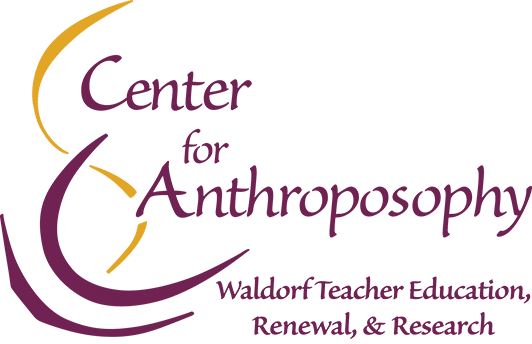All love, lower and higher, is breath of the gods.
– Rudolf Steiner, lecture of 22 November 1906 (Berlin)
Through the same power with which the heavenly sank into or was drawn into matter and became earthly love . . . in an earthly way the intellect of man bound itself up with matter, and created the materialistic form of science.
– Rudolf Steiner, lecture of 11 September 1916 (Dornach)
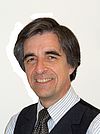 Summertime . . . a time to kick back, swim, boat, ride, cook meals outside.
Summertime . . . a time to kick back, swim, boat, ride, cook meals outside.
Not exactly. While some schools and teachers may be experiencing the quiet days of summer vacation, the faculty and staff at the Center for Anthroposophy are engaged in our “high season” of summer courses and teacher education programs.
In this issue of our new monthly newsletter, Center & Periphery, we bring you a few vignettes––as well as a few bursts of video––of activities occurring both at the hub of our summer campus on Abbot Hill in sunny southern New Hampshire and in the periphery of our activities. These include highlights of this year’s Renewal Courses featuring some of our new guest instructors including Christof Wiechert from the Goetheanum in Dornach, Switzerland; Aonghus Gordon from Ruskin Mills in England; and Dennis Klocek from Fair Oaks in California.
You can also follow the peregrinations of our own faculty –– from the annual teachers conference of the Association of Waldorf Schools of North America (AWSNA) in Atlanta GA to the world anthroposophical conference at the Goetheanum.
We hope you enjoy these reports from corners of the world near and far.
Douglas Gerwin, Director
Center for Anthroposophy
In this Issue
Dateline Wilton: Record Enrollment in Summer Programs
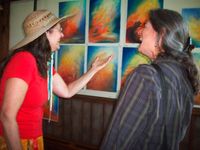 Between the fortnight of week-long Renewal Courses and the teacher
Between the fortnight of week-long Renewal Courses and the teacher
education programs offered by the Center for Anthroposophy and Antioch University New England, summer enrollments broke all records this year. Here follow some vignettes from our busiest summer ever.
They came from the furthest reaches of the continent––Alaska and Hawaii in the West, Maine and Florida in the East––to take part in programs sponsored by the Center for Anthroposophy and Antioch University New England this summer. In all we counted 475 participants, representing record enrollment in both our five-day Renewal Courses and the Waldorf teacher education programs for elementary/early childhood and high school levels.
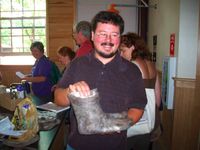 Under clear skies and refreshing breezes, the initial week of Renewal Courses featured a first visit to our program by Christof Wiechert, Leader of the Pedagogical Section at the Goetheanum in Dornach, Switzerland. In addition to offering a highly praised workshop on “child study”, a subject he has carried around the world, Christof graced the week with an evening lecture on three levels of the human “I” and a performance on his beloved violin as part of a string ensemble. Other workshops were offered by new and returning faculty including Christopher Bamford, Georg Locher, Iris Sullivan, Glen Williamson, Darcy Drayton, Rachel Ross and Connie Helms, Lorey Johnson and Kati Manning. Click here for a glimpse of an arts studio course with Iris Sullivan.
Under clear skies and refreshing breezes, the initial week of Renewal Courses featured a first visit to our program by Christof Wiechert, Leader of the Pedagogical Section at the Goetheanum in Dornach, Switzerland. In addition to offering a highly praised workshop on “child study”, a subject he has carried around the world, Christof graced the week with an evening lecture on three levels of the human “I” and a performance on his beloved violin as part of a string ensemble. Other workshops were offered by new and returning faculty including Christopher Bamford, Georg Locher, Iris Sullivan, Glen Williamson, Darcy Drayton, Rachel Ross and Connie Helms, Lorey Johnson and Kati Manning. Click here for a glimpse of an arts studio course with Iris Sullivan.
The second week of Renewal Courses was abuzz with a team of craftsmen from Ruskin Mills led by Aonghus Gordon, who despite blistering heat transformed a portion of the campus into a small outdoor village of industry in iron forging, green woodworking, soap making, and felting. As one participant noted, “It’s as though a thousand years of history fell away and we rediscovered the world of timeless technology.” Click here for some brief video scenes from this program.
Dennis Klocek, a regular member of our summer teacher education faculty, gave his first Renewal course this year on the theme of a “cosmic look at climate”, as well as a vibrant evening lecture on observing natural phenomena at three levels of being. Other workshops were offered by faculty––some new to the program, many returning––among them Georg Locher, Leonore Russell and Torin Finser, Rudiger Janisch, Rena Osmer, and Elizabeth Auer. A third and final round of the AWSNA Mentoring Seminar for experienced Waldorf teachers was facilitated by Virginia McWilliam and Barbara Richardson. Click here for some vignettes of this program, which has been formed and led since its beginnings over a decade ago by Karine Munk Finser, the Center’s Coordinator for Renewal Courses.
Evenings was a time for breathing out and enjoying the artistic talents of students and faculty. Click here for an excerpt of a cello and piano duet featuring Georg Locher, a founding faculty member of the Renewal Courses.
For the remainder of this month the adjacent campuses of Pine Hill Waldorf School and High Mowing School have been humming with the separate teacher education programs for high school and lower school/early childhood educators. New this year is a 32-credit “research” Masters degree in Waldorf education for experienced teachers being offered by Antioch University New England for the first time. Click here for details of this new Masters program.
Dateline Honolulu: Daniel Stokes joins CfA/Antioch Summer Faculty
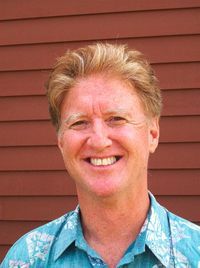 Daniel Stokes, class teacher and trained speech artist working at the Honolulu Waldorf School, is the newest addition to the adjunct faculty of Waldorf teacher education programs at the Center for Anthroposophy and Antioch University New England. Here is a brief profile.
Daniel Stokes, class teacher and trained speech artist working at the Honolulu Waldorf School, is the newest addition to the adjunct faculty of Waldorf teacher education programs at the Center for Anthroposophy and Antioch University New England. Here is a brief profile.
Actor, storyteller, and speech artist, Daniel Stokes trained at three foreign centers of anthroposophical speech and drama––in London, England, Dornach, Switzerland, and Sydney, Australia––before returning to the United States to become a class teacher, first in Ashland, Oregon, then on Whidbey Island, Washington State, and most recently in Honolulu, Hawaii. During his years of class teaching, he also led courses and workshops in speech and drama at Waldorf teacher training institutes in Eugene, Oregon; Seattle, Washington; and Honolulu, Hawaii.
This year, Daniel is teaching for the first time in the Waldorf High School Teacher Education Program of the Center for Anthroposophy and the Waldorf program at Antioch University New England. Even after only two days in these two programs, he has made his mark as a dynamic teacher full of dramatic energy, humor, and practical advice.
Before becoming a full-time Waldorf class teacher, Daniel traveled as an actor in Britain and as a storyteller in Australia, where he founded a roving theater company. For eight years he toured Australia bringing the art of myth and storytelling to schools and colleges. “I have always been something of a gypsy,” Daniel says, “with a taste for warm climates and wide expanses of ocean.” He is still getting accustomed to the feel of solid New Hampshire granite under foot, compared to the shifting sands and flowing pumice of the volcanic Hawaiian isles.
At the end of the summer program, Daniel is returning home to attend a family wedding (of two young Waldorf teachers who found each other during the summer programs here in Wilton) and to prepare to lead his class into the sixth grade –– his first sortie into the upper elementary grades.
Dateline Atlanta: Douglas Gerwin’s Keynote Address
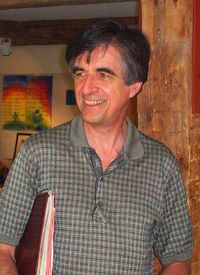 Douglas Gerwin, Director of the Center for Anthroposophy, was one of four keynote speakers at the annual Waldorf teachers conference in Atlanta GA. Here is a brief account of his talk, entitled “Sword and Rose”.
Douglas Gerwin, Director of the Center for Anthroposophy, was one of four keynote speakers at the annual Waldorf teachers conference in Atlanta GA. Here is a brief account of his talk, entitled “Sword and Rose”.
Douglas Gerwin, Director of the Center for Anthroposophy, gave the final keynote address in Atlanta GA at the annual June teachers conference of the Association of Waldorf Schools of North America (AWSNA) on the theme of sex and intellect in puberty and early adolescence. In a talk entitled “Sword and Rose”, Douglas outlined the shared origin of the creative powers of sexuality, on the one hand, and of youthful burgeoning intellectuality, on the other.
Even our language points to a common source. As Douglas pointed out, we “conceive” intellectually as well as sexually. Douglas characterized the qualities (what he called the “gestures”) of the one capacity in terms of the sword––“sharp, cutting, two-sided, cool, brilliant”––and the other in terms of the rose––“soft, rounded, sensuous, velvety, warmly radiant”.
These two creative powers arise from a shared font of etheric formative forces that make it possible for us, beginning with puberty, both to reproduce physically and to form abstract thoughts mentally. When these powers set siege to each other, they generate two mutually antagonistic urges that can last well beyond the teenage years. When, for instance, the forces of sexuality attempt to overpower the realms of intellect, the result is what Rudolf Steiner, in a different context, calls the “lust for the erotic”. By the same token, when the forces of intellect attempt to dominate the realms of sexuality, the result is what he calls the “lust for power”. Building on the content of an earlier keynote address at the conference, Douglas went on to suggest how these forces arise differently in girls and in boys.
When, however, these two creative powers forsake their desire to conquer each other and instead meet in the human heart as partners, rather than as rivals, then we can achieve two higher and uniquely human capacities. On the one hand, we experience union while still respecting separation––a condition the German poet Rainer Maria Rilke calls genuine human “love”. On the other, we learn to make distinctions while retaining a living sense of the whole––a condition the American writer Ralph Waldo Emerson calls “intuition”.
In addition to giving the final keynote address, Douglas also led a workshop with Frances Vig from the Chicago Waldorf School on four formative gestures evident in early embryological development.
The other keynote speakers at the AWSNA conference were Arthur Pittis (Austin TX), Betty Staley (Fair Oaks CA), and Michelle Starr (Shelburne VT).
Dateline Dornach: Torin Finser to Address English Conference
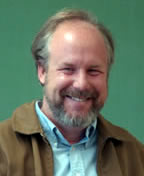 Torin Finser, Chair of the Education Department at Antioch University New England, travels to Switzerland to give a keynote address at the English language conference at the Goetheanum in Dornach. Here he offers a brief preview of his visit.
Torin Finser, Chair of the Education Department at Antioch University New England, travels to Switzerland to give a keynote address at the English language conference at the Goetheanum in Dornach. Here he offers a brief preview of his visit.
From time to time the Goetheanum organizes a world conference in English around a theme of contemporary interest. Theme for this conference, to be held during the August holidays at the Goetheanum in Dornach, Switzerland, is “Entering the 21st Century Spiritually”. I have chosen to devote my keynote address on the second day of the week-long conference to “Freedom and Initiative: How Can the Individual Human Being Make a Difference in Today’s World?” Other speakers will include Cornelius Pietzner on “Reading the Signs of the Time”, Sergei Prokofieff on “The Experience of the Threshold”, Michaela Gloeckler on “Confrontation with the Forces of Destruction”, Sue Simpson on “The Path of Anthroposophy Today”, and Virginia Sease addressing the question, “How Does the Christ Impulse Work Today?” I have also been asked to facilitate an afternoon workshop on adult education.
Watch for details of this international conference in a future issue of our newsletter Center & Periphery.
Dateline China: Excerpts from the Journals of Meg Gorman
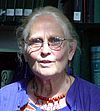 Meg Gorman, veteran Waldorf high school teacher of humanities and history instructor in the Waldorf High School Teacher Education Program at the Center for Anthroposophy, spent part of her half-year sabbatical advising several Waldorf schools in China as part of a round-the-world journey. Here is the second and final excerpt from her travel journal.
Meg Gorman, veteran Waldorf high school teacher of humanities and history instructor in the Waldorf High School Teacher Education Program at the Center for Anthroposophy, spent part of her half-year sabbatical advising several Waldorf schools in China as part of a round-the-world journey. Here is the second and final excerpt from her travel journal.
China II: Guangzhou
My flight back to China was uneventful. When I arrived at the Guangzhou airport, the teacher who picked me up handed me a note from Tammy Hughes that told me I would be going directly to the kindergarten to give a lecture to parents on the four-fold human being. “Yipes!” I thought. I prepared my thoughts and notes as we drove. I was soon ushered into a room without a blackboard and with many parents crowded onto very small chairs. Fortunately, a handful of stones, some green plants, and a turtle awaited me, so I had something to work with. One of two kindergartens in the Guangzhou area, this initiative and the parents involved in them are eager for any education that is not like the ones they endured as children.
In the midst of all this my luggage disappeared briefly, but reappeared at the empty apartment in which I stayed with few amenities. After a poor night’s sleep, the next day was spent giving lectures in strange places, like the crowded room of a restaurant, and later a huddle on couches in a café. With no blackboard and little space, I felt quite challenged at times. The interesting part was the participants’ hunger for spiritual content including anthroposophy. I worked with basic themes, such as the six exercises. Very attentive, the listeners were full of good questions, but every historical reference I made had to be explained because my well-educated audience knew next to nothing about the world wars or China’s history.
Translation was quite a challenge, too. In one lecture, I spoke in English, which was translated (with corrections from those who spoke English) first into Mandarin and then, in turn, into Cantonese for my Southern Chinese audience. At least I had plenty of time to collect my thoughts. As the translations proceeded, I often wondered how much of what I was trying to say was really understood.
It was spring in Guangzhou (formerly called Canton), so there was beauty everywhere in a city that has maintained much of its culture. Although the streets were hardly clean, life felt different from my first sojourn into China. The shades of Western colonialism are still everywhere here, and much of the old architecture is still in place. I spent a morning in the kindergarten in the suburbs, where Jenny, the teacher, and her male assistant taught a wonderful classic Waldorf lesson in a beautiful room. Here I finally unloaded the rest of my infamous box of wool and seashells, which I had dragged along for some weeks from Hokkaido, Japan. Jenny was delighted, and I felt good about these small gifts from Japan to China, two nations which do not get on well at the moment.
—–
Chengdu
Back on my way to Chengdu, I was also worried about arriving at midnight, and I could not reach my contact, Harry Wong, without a cell phone. I absolutely could not manage the pay phones, no matter how I tried. Harry, of course, had no way of knowing when I would arrive because the domestic airlines don’t tell anyone how long flights are delayed. Harry and his wife, Li, had waited for hours. Then he had taken her home and come back to look for me. Once on the ground, I could not find him, and I had an after-midnight-alone-in-a-domestic-airport in-Chengdu moment of panic. Then Harry sailed up and said, “Oh, it’s you.” We greeted each other warmly.
I had met Harry Wong nine years earlier at a Pacific Rim Conference in Thailand. At the time, he had just finished teacher training and was visiting schools to get the broadest possible picture of Waldorf education. “I am going to bring Waldorf education to China,” he told me. I was incredulous.
“But, it’s a Communist country,” I had said. “Where will you do it, in Shanghai?”
“No,” he had told me, “in Chengdu, in the heart of China. You must come and help,” he had told me. In the ensuing years, we lost touch with one another and he had forgotten my name. However, we had not forgotten each other.
—–
After careening artfully through traffic, Harry finally turned down the road to the Waldorf School, proudly marked with a city sign. At the end of a dirt road, on a high terrace above one of the worst slums I have ever seen, their little school is alive and well. Here children get to play on grass and spend time building in the sand with bricks and twigs. Here children garden. One afternoon, the third grade was selling produce from their horticultural efforts to parents. Harry had done it; he had begun a school in Central, China, and it is a good beginning.
It all started years before when Harry met Ben Cherry, an Australian Waldorf teacher, who had stopped at the restaurant Harry was then running. Harry, who credits his abilities to the fact that he “grew up wild in the country,” decided, then and there, to become a Waldorf teacher. After finishing his training at Emerson College in England, his wife, Li, also did so as did one of their best friends, Li Zewu. However, they realized that the ideas of group working and group leadership were not natural to China, so Harry and Li went to Spring Valley and continued their education in group work at the Fellowship Community there. In the process they managed to have three children: one in England, one in China, and one in the U.S. Today, besides driving the bus, Harry is the development director, administrator, handy man, and the go-to guy for just about everything at the school. Zewu teaches the combined grade 5/6, and Li works in one of the two kindergartens.
Everyone there is living at a subsistence level, and yet, all the young teachers I met told me they loved the school and would not leave. I was soon visiting classes, giving lectures and helping in any way I could, which was almost full time. I gave up my plans to travel west to the high plateau and Urumqi. Everyone else was working so hard, it was impossible not to help with the same intensity.
In Bangkok, a beautiful young Chinese woman named Bing Hao had attended my lectures. On my first day at the Chengdu school, I found her looking for me. Very interested in Waldorf education, she is one of the leaders of an environmental non-governmental organization (NGO) that is getting businesses to help send volunteers into schools to educate them about the environment. She has also written some lovely children’s books to accompany her work, and is nothing short of amazing. First of all, NGO’s are few and far between in China because it is very hard to get a license to operate one, and, secondly, independent agencies are simply not part of general life in China.
—–
At the school, I also met a couple, two remarkable Austrian class teachers, Ulrike Binder and Richard Bointner, who had bicycled from Shanghai. We were soon working as a very good team to help the school, the parents, and the new, untrained teachers in the early grades. The materials at the school are minimal, and the blackboards are so rough it is hard to make a drawing. Yet, so much is going right there. The faculty sings well together, and I had one of the most moving experiences of the trip when Ulrike, Richard, and I spoke to the faculty about group work and inner work. The teachers are so open and eager to find a way to heal themselves, their children, and China.
In fact, the children are very challenging to teach. With only one child in most families, the parents are over watchful and very concerned about academic learning. Most of the youngsters I saw are media damaged. They are also quite tyrannical in class because they have been somewhat spoiled by so many adults in their lives. I was not sure how to help, especially the nervous parents. Perhaps they need to create surrogate families with their friends and let their offspring play together regularly to work off their rough edges. The children are also exhausted because they have no regular bedtime or boundaries. These little ones need to run, to swing in trees, to play, and then to fall into bed before 8:00p.m. The courageous teachers definitely have their hands full.
The school has crying needs, not the least of which are trained teachers and translations of the basic books of Rudolf Steiner from German into Chinese. Bombarded by curious parents, the core faculty has its hands full. This summer they will start the first of several four-week teacher-training modules with teachers from North America and Australia.
—–
Chengdu, a city of twelve rivers and very hot food (Schezhuan) in the heart of central China, is alive and robust, if not especially clean. The Ming and Tuo Rivers run through the center, and life gathers on their shores. Three thousand kinds of animals and plants live here including protected and endangered species like the red panda, the golden monkey, and the gnu. This is also the home of the more familiar great panda, and Chengdu has one of the most successful breeding programs and research institutes on the classic panda. The area is also rich in ores, coal, and natural gas.
An old story says that one should not visit Chengdu as a young man, or he will never leave. People often sit outside, drink tea, and, for a small fee, have their ears cleaned with long wires which operate like ten-inch cotton swabs. People sit reading and chatting while the ear cleaners work. Everything else around them may be faded and dirty, but the ears are clean. Caged birds are also popular in Central China, and folks can be seen taking their birds for daily walks in their cages.
Conversation here often felt like machine-guns turned on high volume. What I often thought was an argument between two people turned out to be a simple conversation. In general, the medical scene is a nightmare. Chinese traditional practitioners are widely considered better than any doctor one meets in a hospital. Dental possibilities are worse. China is definitely not a place to get sick.
—–
Rui Shao, an outspoken young teacher at the school who had spent two years in Australia, was one of my main translators. Along with Harry and Li, I was able to communicate fairly well at the school. After nearly two weeks of hard work, I found myself deeply committed to the school. However, word was out that I was in town, and I was now wanted in Xian to help with a Waldorf initiative there. I left Chengdu reluctantly because the school, like others, had crept into my heart. I wondered if the trials I had faced getting to Chengdu had been put in place by some malevolent force to prevent our relationship. As I left, I wrote them a poem:
Waldorf School of Chengdu
To Li Zewu, Wong Li and Harry
On the edge of a cliff, a terrace
Of long abandoned holidays
Is coming alive.
The grey scum of slums settles
In the valley,
But on the other side of the rise
Children are rolling down a green,
And the song of a diminished culture
Is merging to a melody of joy,
Wrought from holy days
Of sweat and sorrow,
And a dragon, tamed by love,
Is dancing in the clouds.
—–
Xian
It was time for my all-day workshop on parenting small children and on Waldorf education. This time the site was an exquisite Buddhist center filled with running water, natural wood structures, plants, and beautiful pen and ink washes done by the “Master,” an artistic and very sensitive fellow of about 40. When the Master heard about me, he let us use his wonderful conference room without a fee. Later, we had an audience, and I thanked him. Speaking with measured care and through a translator, he told me about the crisis in Chinese education and the trials facing China. He knows somehow about Waldorf education, and he is very interested in knowing more. He is committed to finding a way to restore the Chinese to their sacred roots and culture. I was very heartened by this meeting, and I hope Harry and he will meet soon for the sake of the children of China.
At the end of the day, I went to visit the new kindergarten rooms, which are on their way to becoming a Waldorf initiative. Again, I was impressed by the striving of all those involved, especially Pei Juan, who is one of the teachers and who made my stay in Xian marvelous.
After my glorious respite in Xian, I returned to Guangzhou for a bit more work, only this time I asked for a room in which I could actually teach. I was rewarded with a pleasant space at the back of The Cohiba, a topless bar. Perhaps this is the first all-day workshop on the threefold nature of social life in such a facility. It certainly was for me.
—–
Closing Reflections
Before I went to China, I thought I understood something about the Cultural Revolution. However, I could not have imagined what it could do to a nation. I understand now why every totalitarian leader first burns the books. Once the culture is stripped away, desperate human beings will latch onto anything that seems to give them a sense of self, be it Nazism or Communism. Another phenomenon in China is the rise of cults and born-again Christianity. The Mormons are also very busy here. So, the worst of Western materialism is creating totalitarian capitalism, and the people are seeking for meaning in emotional religion. There is much to ponder in China, and Waldorf education is really needed.
—–
After a warm goodbye lunch with Tammy Hughes, who was largely responsible or my sojourn in China, I set out for the airport. I was filled with poetry and affection at last for this enormous and complex country. I was also flooded with gratitude for the courageous souls who are doing such good work here. Now when I think of the pollution which casts a haze over every Chinese city I visited, I will think of Hao Bing and her work; when I worry about Chinese children, I will think of Wan Fen, Harry, Li, Jenny, the Master, and the other many teachers and parents working to bring human connection to education. Richard and Ulrike continue to dance in my heart – especially after an evening in which they taught the Chinese teachers how to waltz, and then how to rock n’ roll using the new Chk! Chk! Chk! CD. The list goes on and on. When I see kites flying, I will see those of Chinese children in Xian, and I will let them give me hope for things that first seemed impossible.
Preview: CfA Launching New Website
The Center for Anthroposophy is about to launch its newly redesigned website. The full redesign, including new video footage of our programs, will appear on the web in late summer 2010.
